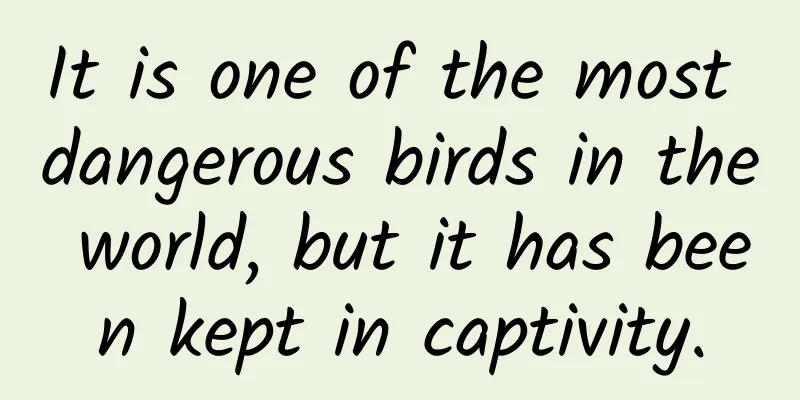It is one of the most dangerous birds in the world, but it has been kept in captivity.

|
Today we are going to talk about a bird, a beautiful but dangerous bird—— Double-waving cassowary. Cassowary Image source: wikipedia How dangerous are crane camels? The double-wattled cassowary, native to the forests of New Guinea and northern Australia, is considered one of the most dangerous birds in the world. First of all, it is tall and strong. An adult crane camel is about 1.5 meters tall and weighs up to 150 pounds, or 136 kilograms. The cassowary is a flightless bird closely related to the emu. Image credit: Marc Dozier stare Photo credit: Marianne Purdie If you think all this is nothing, let's take a look at the claws of the camel. Their claws can grow up to 10 centimeters long. When cassowaries feel threatened, they will rush at the target at lightning speed and attack with their sharp claws. Cassowary claws Image source: blog.naver.com The last person who recruited it is no longer here. Image source see watermark In Australia, cassowaries attack people every year, and humans may be stabbed, torn, fractured, or even killed. So, don't get close to cassowaries, and don't provoke them! ! In the past, people kept cranes and camels in captivity. When humans arrived in New Guinea 42,000 years ago, these settlers found the rainforests inhabited by the cassowary. Despite the dangers of the cassowary, a new study has found that New Guineans were keeping the cassowary in captivity as early as 18,000 years ago. While excavating a primitive human settlement, archaeologist Susan Bulmer found many artifacts and bird remains, including more than 1,000 cassowary eggshell fragments. Cassowary eggs Image source: PansLaos She took the eggshell fragments back to the laboratory and found that each egg was in the state of being hatched, and some eggs were even about to hatch. And some eggshells had traces of burning, which indicated that people were cooking these eggs and preparing to eat them. "It's very likely that humans incubated the eggs and raised the young in captivity," said Dr Kristina Douglass, an archaeologist at Pennsylvania State University. The researchers also note that indigenous peoples of New Guinea use cassowary meat and feathers in trade and rituals, and they raise cassowary chicks from eggs of other wild birds. But stealing cassowary eggs is not an easy task. The cassowary's nest is hidden deep in the forest and guarded by fierce male cassowaries. Early New Guineans had to carefully study their activities and then strike at the right time. If they were discovered, it would be really not fun. This foot strength, scared Image source see watermark If all of the above speculations are true, then early New Guineans may be the earliest known humans to tame and domesticate birds. I just want to say: respect! But remember, if you encounter a crane camel, don't get close! Don't get close! Source | discovery.com Translation | Kang Jiani WeChat Editor | Ah She Shuang Museum |
>>: Do you care about what others think?
Recommend
How to operate the remaining traffic of the content platform?
Content platforms have surplus traffic every day....
Cancer is contagious, but not in the way you think
"Viral" and "contagious" canc...
How to improve user acquisition and retention?
As the Internet's demographic dividend become...
Yellow horses should not run around, only green and healthy horses can participate in the Spring Festival travel!
"Calendar Lady, do wildebeests really turn g...
Do you like to stretch your feet out of the quilt when you sleep? Can't sleep without turning on the light? People with this sleeping habit should pay attention
This article was reviewed by Zhao Wei, MD, associ...
13 key points to help you understand the entire offline event preparation process
Organizing events is a common practice in operati...
Pew: Survey shows that more than 80% of Americans do not use AI at work
According to Business Insider, although American t...
Electric Technology Car News: A 90,000 yuan high-value showdown between the new Emgrand and Arrizo Sport
As the founding fathers of independent brands, Ge...
Microorganisms: We are the engine of soil material circulation!
Produced by: Science Popularization China Author:...
How to make a good toilet paper that won’t clog the toilet and isn’t easily torn?
You probably use up to 50% of the toilet paper in...
Can Changan Eado R, the first performance car of a self-owned brand without manual transmission, become a small steel cannon?
For a long time, there has been a saying that &qu...
Marketing promotion: How are brainwashing advertisements made?
The main reason why brainwashing advertisements c...
China releases five-year plan to become a space power. What are the space dreams of China, the United States and Europe?
On January 28, 2022, the State Council Informatio...
Why is there always the sound of marbles falling to the floor upstairs in the middle of the night?
I don't know if you have ever encountered suc...
Geely and Faraday Future finally announced their cooperation, and may become FF's OEM and participate in IPO investment
After a period of rumors, the cooperation between...









